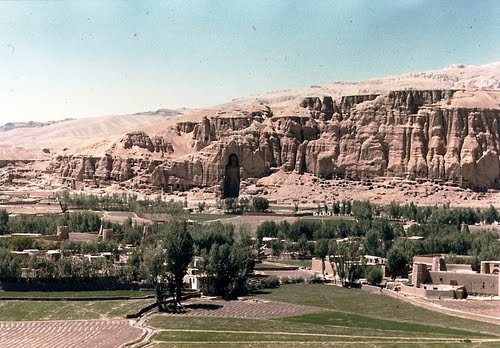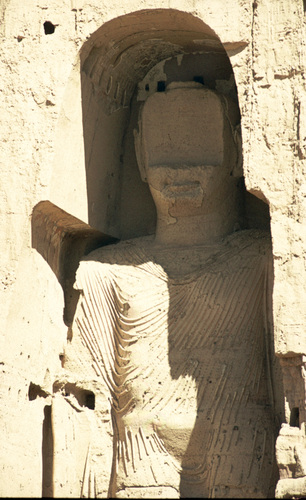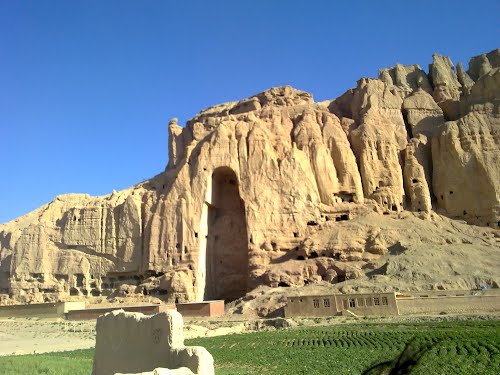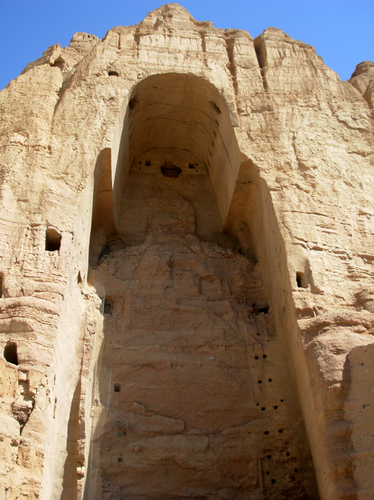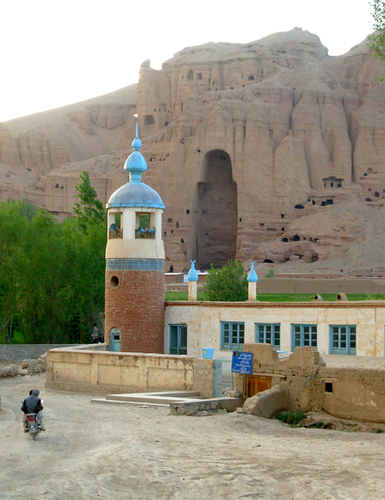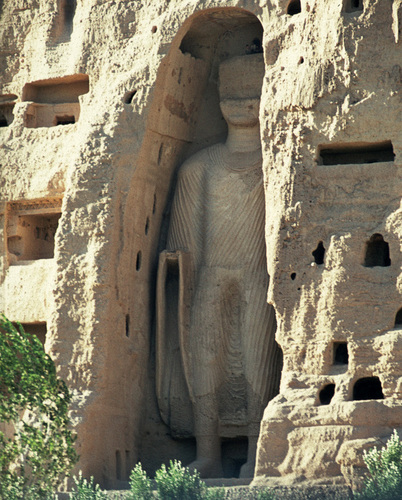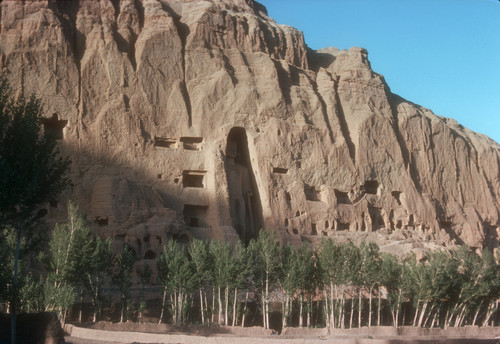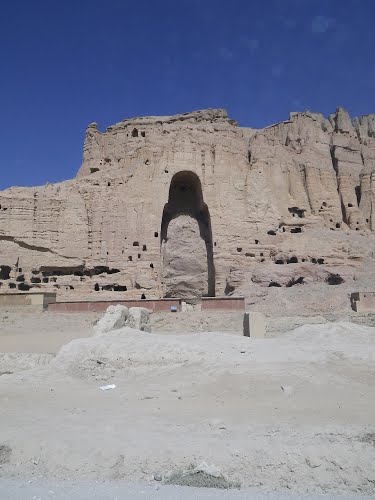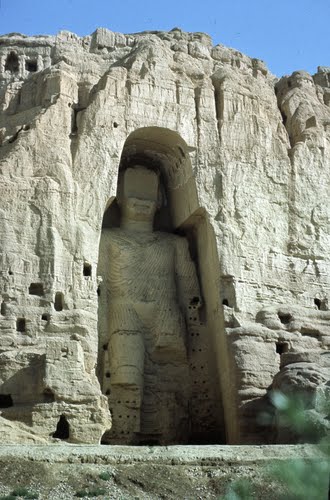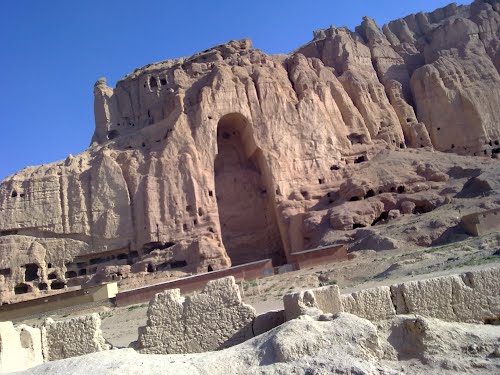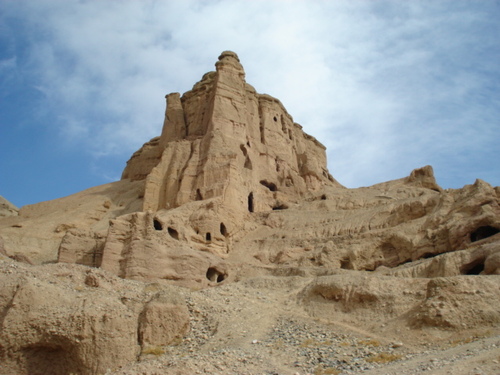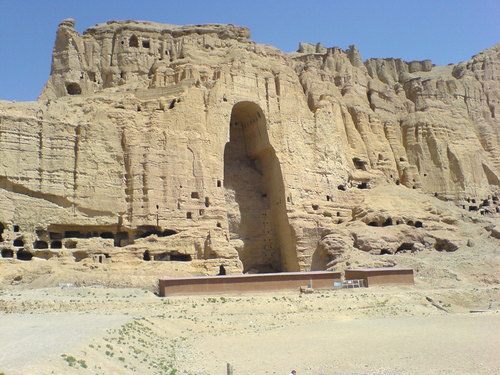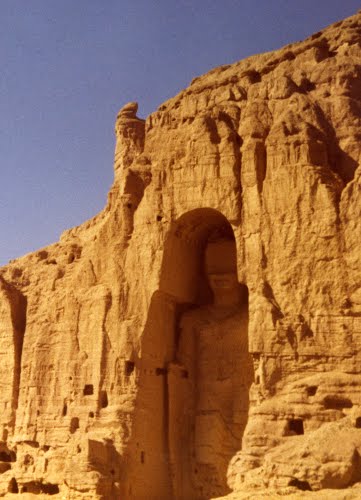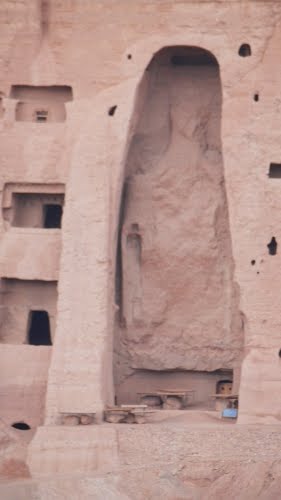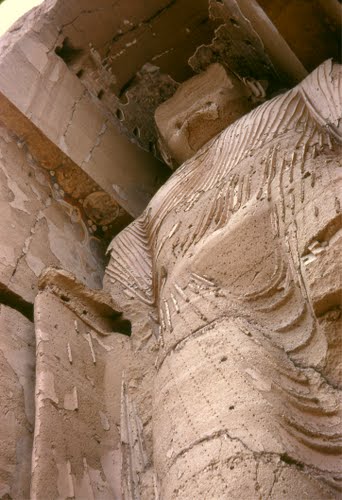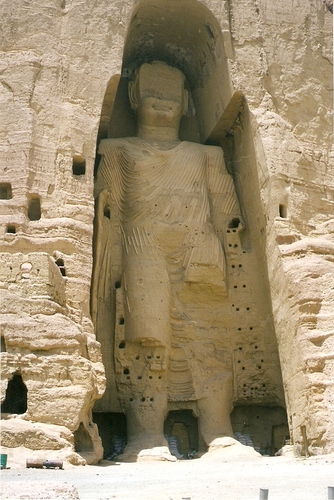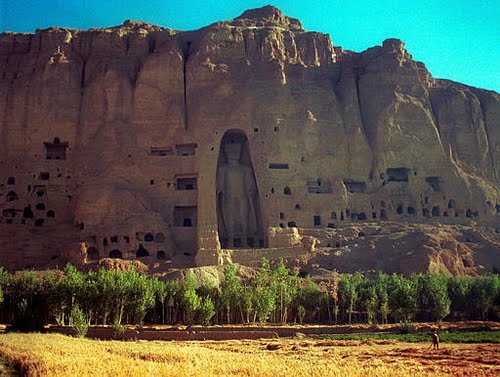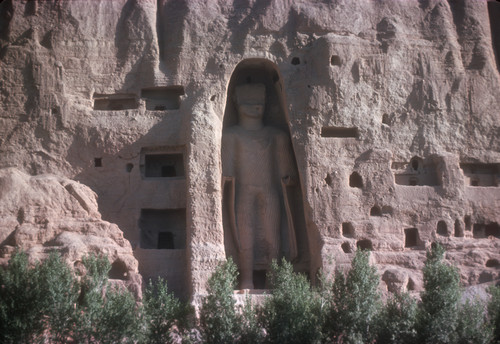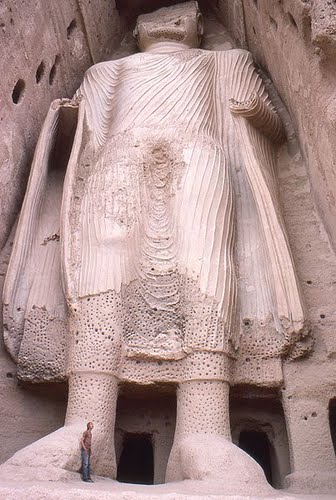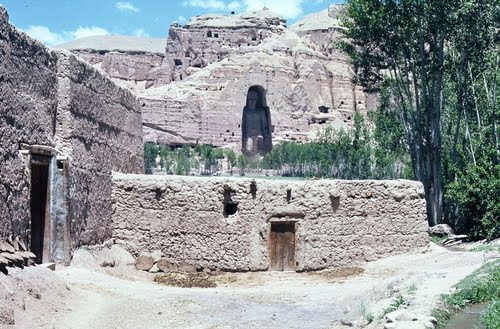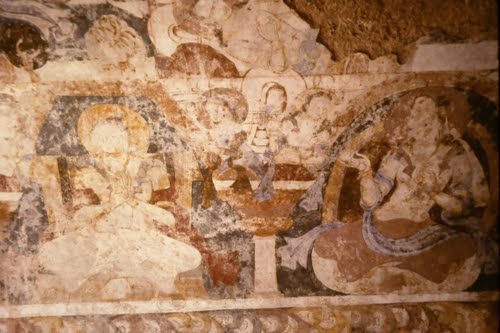The Buddhas of Bamiyan were in 4th and 5th-centuries monumental statues of standing buddha carved into the side of a cliff in the Bamyan valley in the Hazarajat by Hazaras region of central Afghanistan, 230 km northwest of Kabul at an altitude of 2,500 meters. Built in 507 CE and 554 CE, the statues represented the classic blended style of Gandhara art. They were 35 and 53 meters tall, respectively.
The main bodies were hewn directly from the sandstone cliffs, but details were modeled in mud mixed with straw, coated with stucco. This coating, practically all of which wore away long ago, was painted to enhance the expressions of the faces, hands, and folds of the robes, the larger one was painted carmine red and the smaller one was painted multiple colors.
The lower parts of the statues' arms were constructed from the same mud-straw mix while supported on wooden armatures. It is believed that the upper parts of their faces were made from great wooden masks or casts. Rows of holes that can be seen were spaces that held wooden pegs that stabilized the outer stucco.
They were dynamited and destroyed in March 2001 by the Taliban, on orders from leader Mullah Mohammed Omar, after the Taliban government declared that they were idols. An envoy visiting the United States in the following weeks explained that they were destroyed to protest international aid exclusively reserved for statue maintenance while Afghanistan was experiencing famine, while the Afghan Foreign Minister claimed that the destruction was merely about carrying out Islamic religious iconoclasm. International opinion strongly condemned the destruction of the Buddhas, which in the following years was primarily viewed as an example of the extreme religious intolerance of the Taliban. Japan and Switzerland, among others, have pledged support for the rebuilding of the statues.
History
Bamiyan lies on the Silk Road, which runs through the Hindu Kush mountain region, in the Bamiyan Valley. The Silk Road has been historically a caravan route linking the markets of China with those of the Western world. It was the site of several Buddhist monasteries, and a thriving center for religion, philosophy, and art. Monks at the monasteries lived as hermits in small caves carved into the side of the Bamiyan cliffs. Most of these monks embellished their caves with religious statuary and elaborate, brightly colored frescoes. It was a Buddhist religious site from the 2nd century up to the time of the Islamic invasion in the later half of the 7th century. Until it was completely conquered by the Muslim Saffarids in the 9th century, Bamiyan shared the culture of Gandhara.
The two most prominent statues were the giant standing Buddhas Vairocana and Sakyamuni, identified by the different mudras performed. The Buddha popularly called "Solsol" measured 53 meters tall, and "Shahmama" 35 meters - the niches in which the figures stood are 58 and 38 meters respectively from bottom to top. Before being blown up in 2001 they were the largest examples of standing Buddha carvings in the world. Since then the Spring Temple Buddha has been built in China, and at 128 m it is the tallest statue in the world. Plans for the construction of the Spring Temple Buddha were announced soon after the blowing up of the Bamiyan Buddhas and China condemned the systematic destruction of the Buddhist heritage of Afghanistan.
The smaller of the statues was built between 544 and 595, the larger was built between 591 and 644. The larger figure was also said to portray Dīpankara Buddha. They were perhaps the most famous cultural landmarks of the region, and the site was listed by UNESCO as a World Heritage Site along with the surrounding cultural landscape and archaeological remains of the Bamiyan Valley. Their color faded through time.
The destruction of the Bamyan Buddhas became a symbol of oppression and a rallying point for the freedom of religious expression. Despite the fact that most Afghans are now Muslim, they too had embraced their past and many were appalled by the destruction.

